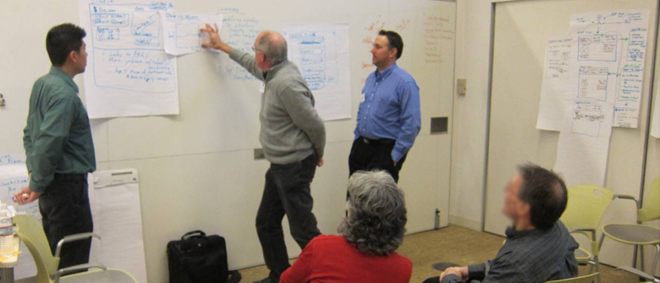How Fidelity Co-Creates Its Customer Experience Ecosystem
To get a grip on your customer experience ecosystem — the complex set of relationships among your company's employees, partners, and customers that determines the quality of all customer interactions — you need to map it, co-create it, and socialize it.
When I say “co-create it,” you might think of websites like My Starbucks Idea or Dell’s IdeaStorm — and those sites are great, but they’re not exactly what I’m talking about. Focus groups might also come to mind — but they’re not what I’m talking about, either. When I talk about co-creation, I’m talking about active participation from employees, partners, and customers throughout the experience design process — from upfront research to in-person ideation sessions and concept testing.
As I mentioned in my keynote at Forrester’s recent Customer Experience Forum, this is an approach that Fidelity Investments has taken to heart. It's been working with the Stanford d.school — yup, that’s “d” as in “design” — to embed co-creation within Fidelity’s organization.
The picture below shows a workshop in which Fidelity employees have immersed themselves with pictures and notes from in-field research looking at how Gen Y consumers interact with money.

But it’s not just Fidelity employees who are involved in the company’s co-creation activities. This next image shows a Fidelity customer telling Fidelity employees what’s interesting — and what’s not — about a rough sketch for a pretty complex financial portfolio product.

What I love about this picture is that the customer and the employees aren’t separated by one-way glass. And there aren’t any beautiful Photoshopped mockups in the room — the prototype was created with dry-erase markers (arguably one of the lowest tech options out there).

And so when a customer jumps out of his seat and shows Fidelity employees what’s most important to him, those employees can engage him in direct conversation and change the designs on the fly.
They are truly co-creating.
Does your company embrace co-creation during the experience design process? If so, please share!